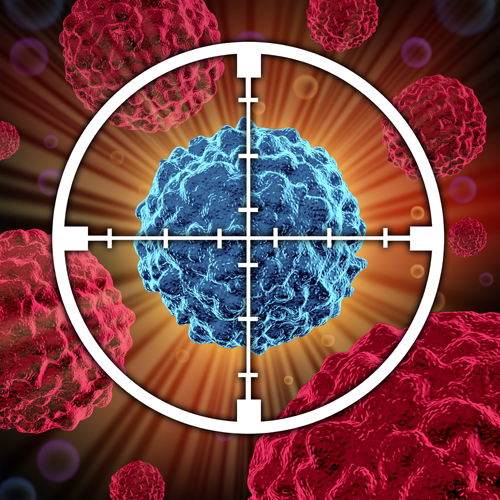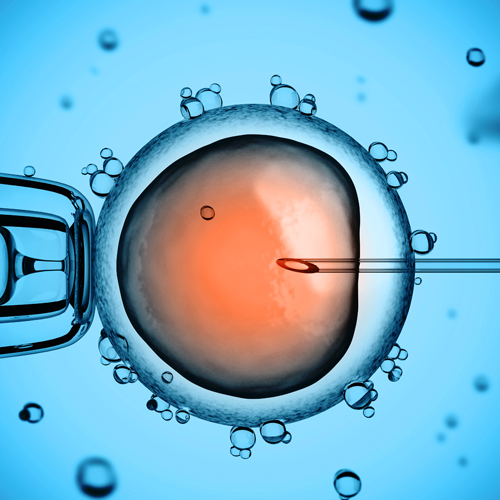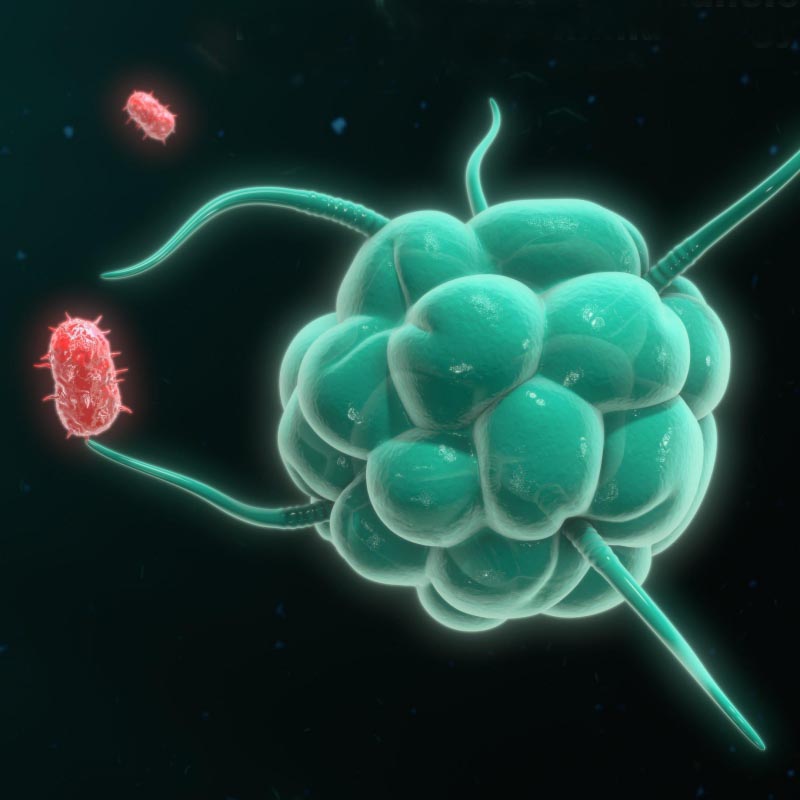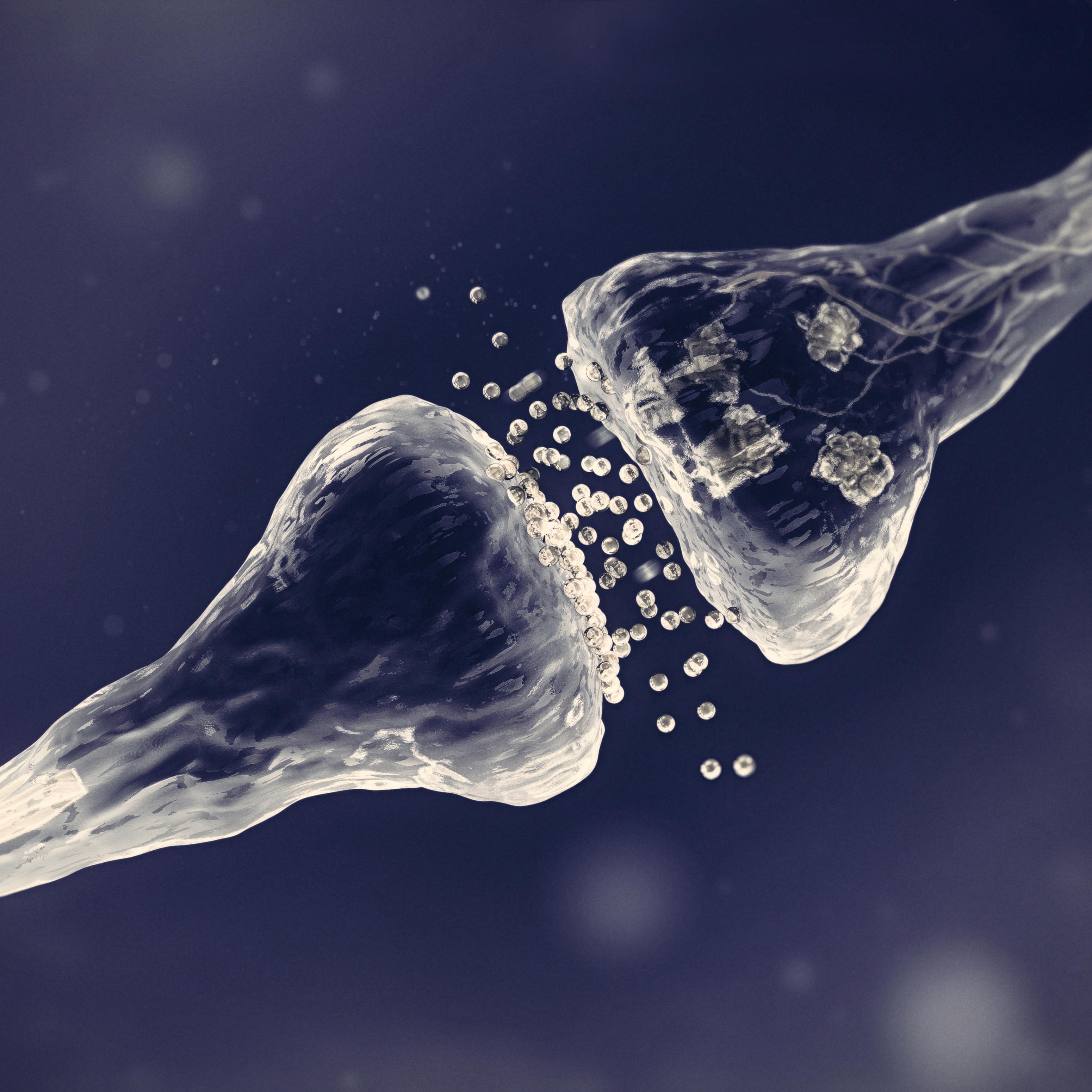The unifying element is a research approach that shifts attention from individual biological ‘parts’ to the orchestrated function of interconnected networks of genes, molecules, cells or organisms. Researchers in this theme often use ‘big data’ and high-throughput ‘-omics’ approaches, notably genomics, phenomics, proteomics and metabolomics, to make sense of complicated observations, to uncover and target disease mechanisms, and to explore and exploit biological ‘design’ principles. Trainees in this theme are part of a highly collaborative, interdisciplinary, and technology-focused learning environment that provides a comprehensive foundation for a broad range of academic and professional careers.

Systems biology and chemical biology
Researchers
Benjamin Rotstein
From a foundation in all aspects of radiopharmaceutical chemistry, our laboratory seeks to develop strategies and methods for application ultimately in nuclear molecular imaging research and clinical diagnosis. Dr. Rotstein aims at developing efficient and practical methods for incorporation of radioisotopes into small molecules and conjugation to biomolecules, targeting and selective imaging probes for biochemical processes of relevance to cardiology, neuroscience, and/or oncology preclinical and translational research and diagnosis and imaging validation of biomarkers for precision profiling of disease, drug development, and monitoring response to therapeutic intervention.
Daniel Figeys
Dr. Figeys’s research involves developing proteomics technology and their applications in systems biology. This research is providing a comprehensive view of interplay between the biomolecules involved in proteomics and system biology. Dr. Figeys and his group are developing micro fluidic technologies to measure the level of proteins in minute amounts of biological samples as well as developing a high-throughput mapping technology to detect various kinds of protein modifications. Dr. Figeys is also working on the application of proteomics with other "omics" approaches to study human diseases in a systematic manner.
David Bickel
Our lab uses mathematics to interpret the results of biological studies. In particular, we collaborate with scientists and clinicians to use probability and statistics to help them understand the conclusions that can be drawn from the observations they make in conducting scientific studies. For example, in large-scale genetic association studies, thousands of letters of DNA code are measured for hundreds of people with a widespread disease and for hundreds of people without the disease. The goal of this research is to create mathematical methods of accurately determining which DNA letters make someone more susceptible to contracting the disease.
Emilio Alarcon
Dr. Alarcon laboratory focuses on the fabrication, development and implementation of new materials with regenerative capabilities for tissue regeneration of heart, skin, and soft tissues.
Ilya Ioshikhes
Our research is focused on gene regulation. It includes several related projects and studies on chromatin, transcription factor (TF) interactions with DNA, promoter analysis and microRNAs. Specific projects include algorithms for mapping TF binding sites and cis-regulatory modules, nucleosome mapping, the study of the influence of histone variants on chromatin architecture, chromatin modeling, and the development of algorithms for mapping miRNA targets. Other areas of bioinformatics, such as the human milk metagenome, are also part of our area of interest. Our goal is the mathematical modeling of gene regulation processes on various levels, combined with position prediction of regulatory elements.
Jean-Francois Couture
Our laboratory focuses on understanding the mechanisms that cause leukemia. Specifically, we want to understand how the protein Myeloid Lymphoma Leukemia (MLL) participates in cancer progression and aggressiveness. MLL is sometimes compared to Dr. Jekyll and Mr. Hyde: it is very important for embryonic development, but when the protein is mutated its activities become uncontrolled, which ultimately participates in the appearance of acute leukemia. In studying MLL, we hope to find new therapeutic avenues for the treatment of acute leukemias.
John E. Baenziger
The Baenziger lab uses a variety of biophysical tools to study the structure and biological function of a superfamily of proteins, called pentameric ligand-gated ion channels (pLGICs). These neurotransmitter receptors are found in pre-, post-, and non-synaptic membranes of the central and peripheral nervous system where they play a key role in both synaptic communication and information processing. The lab focuses on nicotinic acetylcholine receptors (nAChRs), which respond to the neurotransmitter acetylcholine to mediate synaptic communication. nAChRs are implicated in a number of neurological and neuromuscular disorders, including Parkinson’s and Alzheimer’s disease, mood disorders, epilepsy, addiction, congenital myasthenic syndromes, etc. The Baenziger lab is interested in understanding the mechanistic details of how the activity of nAChRs are modulated during both normal and abnormal brain function, with the goal of developing new strategies to correct the altered synaptic communication that occurs in diseased states.
Kin Chan
Cancer results from alterations in a cell’s DNA, called mutations, which can lead to uncontrolled cell growth and division. Therefore, to understand the origin of cancer at its most fundamental level, we must understand the origin of mutations. Mutations are caused by the reaction of DNA with chemical, enzymatic, or physical agents called mutagens. Each mutagen creates a characteristic mutation signature in DNA, which includes the DNA sequence context(s) that are targeted preferentially and the resulting pattern of DNA base substitution(s). Some of these signatures have been identified in cancer samples. However, the mutation signatures of many carcinogens and mutagens remain undetermined. Dr. Chan’s research program combines leading edge techniques in molecular biology, genetics, and bioinformatics to elucidate the mutation signatures created by high-priority known or suspected carcinogens identified by the International Agency for Research on Cancer (IARC), which is part of the World Health Organization. With a better understanding of the origin of mutations, it will be possible to devise better cancer prevention, diagnosis, and treatment strategies.
Kristin Baetz
During evolution, there has been a high level of conservation between the budding yeast Saccharomyces cerevisae's cellular processes and those of mammalian cells. The advantages of using S. cerevisiae as a model system are multiple, including easy genetic manipulation and availability of several experimental tools for genetic, biochemical and molecular biology studies. Thus, S. cerevisiae has been the platform model organism for the development of genomic and systems biology techniques. The Baetz laboratory is developing and applying high throughput yeast chemical and functional genomic screening along with proteomics to three areas of research interest including Genetic and Molecular Basis of Chromosome Instability , Chemical genomic approaches to decipher the biological impact of alkylacylglycerophosphocholine second messengers in Alzheimer’s disease and Improvement of industrial yeast strains used in cellulosic fermentation.
Laura Trinkle Mulcahy
Dr. Trinkle-Mulcahy is a cell biologist who uses a unique combination of fluorescence microscopy and quantitative proteomics to map the targeting of protein phosphatase complexes throughout the cell. These key enzymes contribute to the regulation of nearly all cellular signaling pathways; aberrant phosphorylation is a causative factor in a range of human diseases. A greater understanding of their regulation at the cellular level is thus essential for the development of therapeutic strategies targeted at these dysfunctional pathways.
Mads Kern
Dr. Kaern’s primary research focus is on the cellular pathways that regulate gene expression in response to external signals and drug treatment, including mechanisms that can result in drug resistance without genetic mutations. The philosophy of the Kaern lab is that complex biological phenomena can often be explained, or predicted, using quantitative models reflecting the underlying biology. Such models play an essential role in many areas of life science because they can facilitate the development of hypotheses driving experimental investigations forward. The Kaern lab is highly collaborative and integrates experimental (wet lab) and computational (dry lab) research. This provides a unique training environment that allows graduate students to gain experience in molecular biology and advanced genetic engineering, flow cytometry, timelapse microscopy, computer programming, analysis of complex data as well as biological systems modeling and simulation.
Martin Pelchat
Subviral RNA pathogens, like plant viroids and the human hepatitis delta virus are the smallest known virion. These unusual pathogens are composed of a remarkably compact stranded circular RNA molecule consisting of 300 - 1700 nucleotides. Since they do not encode their own replication machinery, they must entirely rely on host cellular components. How the normal host proteins are usurped to replicate these pathogens is an important issue and exposes a previously unknown ability of the DNA-dependent RNA polymerase to use RNA as template. The objectives of our group is to characterize the host-components involved in subviral RNA pathogens replication and study their interactions at the molecular level. Overall, the results that will be generated will be a fundamental building block for the further study of viroid and viroid-like viruses, and for the design of inhibitors preventing their replication.
Mathieu Lavallée-Adam
The Lavallée-Adam Lab uses machine learning approaches, such as Bayesian inference, logistic regression classifiers and support vector machines, as well as sophisticated algorithm design and statistical analyses to answer complex biological questions. A significant portion of the lab’s work involves integrating large-scale genomics and proteomics data in order to derive novel biological knowledge about cellular mechanisms and disease processes.
Michael Downey
A cell’s function is specified by the cohort of proteins that it expresses throughout its life-cycle. These proteins are themselves modified in space and time to dictate localization, structure, and activity. Our group studies the function of a protein modification called acetylation. Acetylation was first characterized as a critical regulator of proteins that bind to DNA (housing all genetic information specifying who we are). Recent work from our group and others suggests that acetylation is more pervasive than ever expected, targeting proteins with diverse biological functions related to cancer, ageing and metabolic syndromes. We aim to identify the function of these modifications and to determine how their regulation can be exploited to diagnose and treat disease.
Patrick Giguère
Substances addressing the opioid receptor system are widely used pharmaceuticals for treatment of chronic pain and addictive disorders. Given the difficulties associated with opioid therapy (overdose, tolerance, addiction, respiratory depression and constipation) there is a need for safer narcotic analgesics. Dr. Giguère's research program seeks to use pharmacological, biochemical and structural approaches to develop a new level of understanding of opioid receptor molecular recognition, pharmacological and functional selectivity, drug screening and design of novel functionally selective allosteric modulators of the opioid receptors and GPCR's enhanced tool box by the development of a novel synthetic biology platform and cell-based assay.
The ultimate objective of his research is to generate distinct therapeutics that will uniquely modify their pharmacology in a medically meaningful way increasing their therapeutic efficacy with reduced harmful side effects.
Steffany Bennett
Dr Bennett's Neural Regeneration Laboratory focuses on two complementary research goals. We study the regulation of neural stem cell and progenitor fate by connexin protein family members influencing neuroregeneration and the role of glycerophospholipid neuromodulators in progressive neuronal dysfunction characterizing neurodegenerative disease. The overarching goals are to reduce the rate of neuronal loss associated with brain injury and facilitate cell replacement by mobilizing endogenous progenitor cell populations.
Theodore Perkins
The Perkins Lab uses bioinformatics and machine learning to answer cutting-edge questions in stem cell and cancer biology. We focus especially on the estimation and analysis of gene regulatory networks, as revealed by high-content assays (e.g. imaging) and high-throughput assays (e.g. microarrays, next-generation sequencing). We also conduct pure methodology research, developing new algorithms and mathematics relating to machine learning, bioinformatics, computational biology, stochastic processes, and biomedical imaging.
Richard Naud
Dr. Naud’s research program looks at using mathematical models to study the structure of the neural code in order to develop efficient information algorithms and improve brain machine interfaces. He also designs statistical methods that can be used on multiple types of biomedical data: electrophysiology, multi-electrode arrays, fluorescence imaging. This is done to arrive at a compact and accurate description of neurons and how they interact[SD1] . We use computer stimulation of neural systems in health and disease, allowing us to screen hypotheses at a rate unachievable with experimental methods, enabling us to test recovery protocols in demyelinating diseases and stroke.
Jyh-Yeuan (Eric) Lee
Elevated plasma level of cholesterol is a risk factor to developing atherosclerosis, a leading cause of cardiovascular diseases such as heart attacks and strokes. Dr. Lee’s laboratory seeks to understand, at the structural level, the structure-function relationship of cholesterol efflux by ABC transporters. Dr. Lee’s laboratory uses structural biology, biophysics and membrane protein biochemistry approaches to i) elucidate the catalytic and the transport mechanisms of ABC sterol and lipid transporters, ii) characterize the specific role of ABC transporters in lipid transport and lipoprotein formation, iii) define the molecular events that can be targeted for pharmaceutical manipulation.





